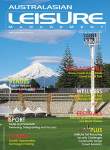Global ‘One Turf Concept’ agreed by international football, hockey and rugby bodies

A ground-breaking protocol for multi-surface playing fields, that could revolutionise how shared sports grounds are used and enjoyed around the world, has been agreed by world football governing body FIFA, the International Hockey Federation (FIH) and World Rugby.
After many years working together on this project, including detailed discussions with industry leaders, the three international federations have managed to balance player welfare and performance with playability for an initiative named ‘One Turf Concept’.
While it is specific to multi-sport venues, the concept can also be applied to any artificial turf sports field not designed to comply with a specific sport-based requirement.
The federations will continue to work with manufacturers and test laboratories in refining standards so as to increase the performance and longevity of the playing fields, which are so important to football, hockey and rugby, especially at the community level where available space and finances may be limited.
Commenting on the agreemenet, World Rugby Chairman Bill Beaumont stated “this is a fantastic example of cross-sport co-operation that will benefit grass-roots sport all over the world.
“While the elite level of each code has a distinct need that often requires its own specific playing surface, 99% of players fall outside that professional, elite group and have different requirements.
“Along with FIFA and FIH, we recognise that the promotion of multi-sport facilities is a cornerstone of the development of our sports in both established and new markets. It is also recognised that the key performance measure of these fields should be focussed on player welfare and, as always, that is our number-one priority. Those seeking to provide safe and high-quality facilities are often in an environment where space and money are limited.”
FIH Director of Sport and Development David Luckes added “while short-pile products are preferred for hockey, the FIH recognises that this partnership can aid development by providing opportunities to play hockey on surfaces where there are no alternatives.
“This is particularly important in developing nations where many sports can join together to share facilities.”
The industry, in the form of the European Synthetic Turf Organisation (ESTO) and the Synthetic Turf Council (STC), supports the initiative as a basis for the design and development of a sports facility.
The ‘One Turf Concept’ is separated into three parts, and should be consulted depending on the age of the field considered. For existing fields, it gives an overview of the minimum performance requirements that should be achieved by the field to ensure it addresses the player interaction requirements for a multi-sport surface. It also gives guidance on the ball interaction requirements that should be achieved.
One Turf Concept
For facilities considering installing a new field or replacing their existing field, the ‘One Turf Concept’ includes:
• Player performance and ball interaction requirements as detailed above.
• Guidance on ensuring the longevity of the field through undertaking laboratory testing which simulates the wear and degradation of the individual elements due to climatic conditions.
• Identification tests to ensure that the surface tested in the laboratory matches that installed on the field.
• Guidance for those fields looking to achieve certification from one or more international federation with the identification of additional requirements that are insisted upon by each individual federation.
World Rugby, FIFA and FIH recognise the importance of the implementation of a regular and comprehensive maintenance regime to ensure that any artificial turf field continues to perform as intended throughout its lifetime.
Adherence to the ‘One Turf Concept’ or to the individual performance requirements set out by the individual federations is unlikely to be achieved over the full potential life of the product without proper maintenance.
The ability of a surface to achieve these standards should be measured through initial testing, performed when the surface has been installed, and regular testing throughout its lifetime.
8th September 2016 - REVOLUTIONARY STABILISATION METHOD FOR ARTIFICIAL TURF AND HYBRID FIELDS SET FOR AUSTRALIAN LAUNCH
22nd October 2015 - FIH LAUNCHES NEW QUALITY PROGRAM FOR HOCKEY TURF
30th April 2015 - WOMEN’S WORLD CUP STARS END ‘TURF WAR’ WITH FIFA
20th January 2015 - TURF AUSTRALIA WARNS COUNCILS AGAINST ‘FAKING IT’ FOR SPORTING GROUNDS
19th September 2013 - FSB TO PRESENT GLOBAL FORUM ON SYNTHETIC TURF
31st August 2011 - NEW THINKING ON ARTIFICIAL TURF SOLUTIONS
